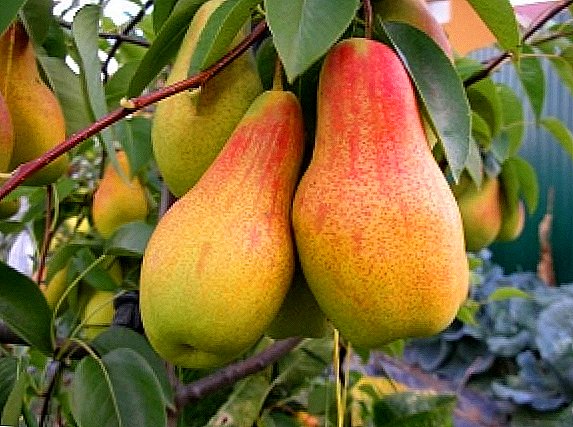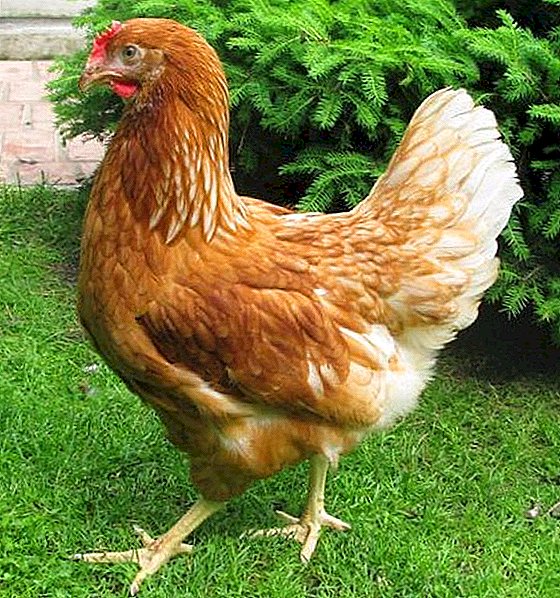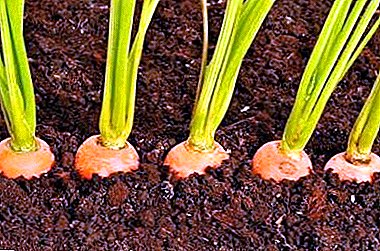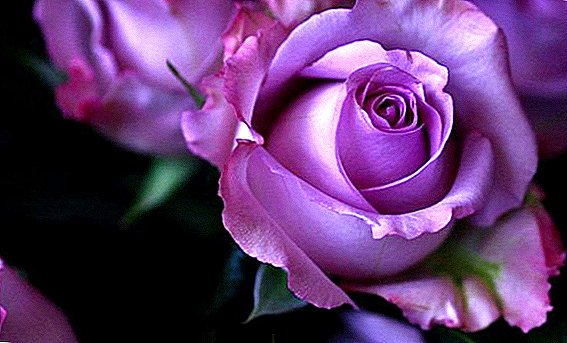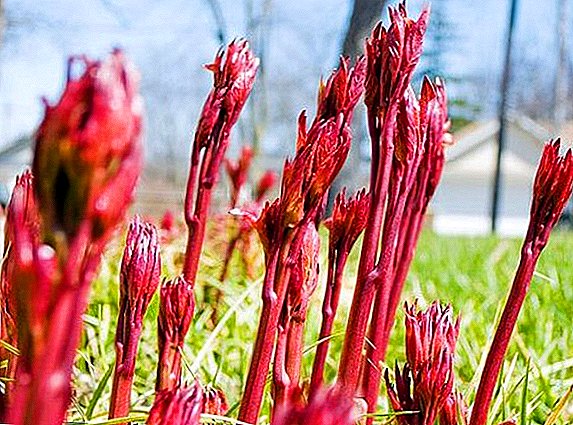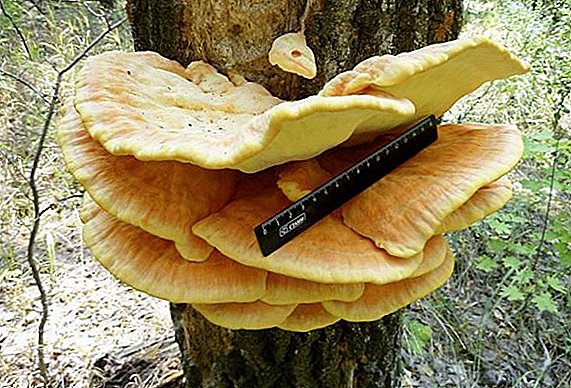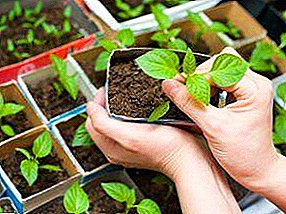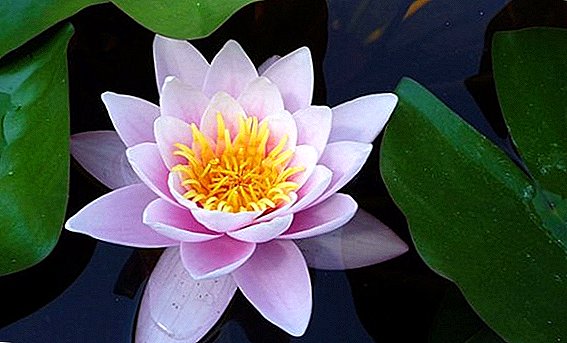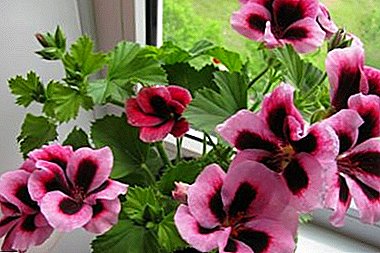
Royal Pelargonium - a truly luxurious flower that can attract the attention of anyone. The natural desire of the grower to become the desire to increase the number of copies of this plant in your home.
This article will be very useful to those who asked the question: "How can you multiply royal pelargonium at home?"
When is it best to perform the procedure?
The timing of the year to reproduce the royal begonia depends on the intended method:
- Cuttings.
For grafting the most suitable period is from August to September. It is during this period that the plant is pruned after flowering, and cut shoots can be used as planting material.
- The division of the bush.
For reproduction of royal pelargonium by dividing the bush, the recommended time is the end of spring - the beginning of summer: it is during this period that the plant is in the phase of active vegetation, so it will easily transfer any manipulations.
The division of the bush occurs during plant transplantation, if it has grown strongly. - Seeds.
Sowing of seeds is usually done in March. It is possible earlier, but then the seedlings will need additional lighting with a phytolamp.
Preparation of the mother plant
 Each breeding method requires certain manipulations with the parent specimen:
Each breeding method requires certain manipulations with the parent specimen:
- Before grafting, the plant is subject to seasonal pruning.
- When dividing the bush, pelargonium should be watered abundantly beforehand to reduce the risk of injury to the roots.
- When collecting seeds on a plant bush, there should be no flowers left except the selected ones, from which the seed will be collected.
How to multiply?
Cuttings
Cutting - an artificial way of vegetative propagation of plants, at which parts separated from the parent plant are used - cuttings. A stalk is a specially separated part of a plant (sprout).
As the cuttings used tops, obtained by pruning ottshushoy pelargonium. An important condition: the stalk should have 2 - 3 internodes, its total length - from 8 to 20 cm.
It is not recommended that the selected shoots contain more than 5 to 6 leaves, as they will take away some of the nutrients and moisture, which will adversely affect the rooting process. It is better to remove the lower leaves from the cutting completely, and cut the upper ones by half.
Reference! The node is the place where the leaves grow, and the internode is the distance between the nodes.
Escape is cut from the mother plant with a sharp knife just below the node and at a slight angle. The cut can be processed with charcoal. Be sure that before rooting the stalk must be slightly dried, that is, left indoors or outdoors for 2 to 8 hours (but not in direct sunlight).
Root Pelargonium rooted immediately in the ground. If the cutting is immersed in a container with water, then with an absolute guarantee it will rot and, accordingly, will die.
Before planting the cutting in the ground can handle its bottom tip (it is cut at an angle) by any stimulator of root formation ("Kornevin", "Heteroauxin", "Epin - Extra", etc.).
We offer to watch a video on how to propagate royal pelargonium with cuttings:
Rooting cuttings
 The cutting is buried in a moistened substrate by 2–2.5 cm, which is pressed tightly around the plant in order to avoid the presence of air bubbles that adversely affect the formation of roots.
The cutting is buried in a moistened substrate by 2–2.5 cm, which is pressed tightly around the plant in order to avoid the presence of air bubbles that adversely affect the formation of roots.
Pelargonium does not like excess moisture, so installing a "hot house" is undesirable: it is enough to place the container in a warm (+ 20С - + 25С), moderately lighted place, but without contact of the future plant with direct sunlight. Shelter (plastic bag or glass jar) can only be used as a last resort: if the leaves are yellowed or wilted.
Shoots should be systematically, but moderately watered. Spraying should not be done. Approximately in 1 - 2 months the cutting will take root. A sign of this is the appearance of young leaves and the relative growth of the shoot.
After planting a plant in a permanent pot, you need to make a nip: the first nip is above 3 pairs of leaves, and new shoots are also pinched. Pinching is done in order to stimulate the branching of the plant in order to form a bush of the required shape.
From the video you will learn how to root royal pelargonium cuttings:
Dividing bush
Reproduction of royal pelargonium by dividing the bush occurs during plant transplantation.
- After removing the plant from the old pot, it is necessary to carefully examine its root system; all rotted or dried elements must be removed.
- Next, you should separate a part of pelargonium with a sufficient number of shoots and viable roots, place it in the center pot, previously prepared for planting (drainage, substrate), cover the voids with soil and crush it around the plant with your hands.
- After planting, the plant should be watered sufficiently copiously, and then - moderately, otherwise the root system or stems may rot.
Seeds
 When propagated by seeds, the characteristics of the parent plant may not be preserved.
When propagated by seeds, the characteristics of the parent plant may not be preserved.
- Seeds of royal pelargonium can be collected personally, and can be purchased at any specialty store. But in any case, they are processed: they are soaked in a weak solution of potassium permanganate for 4 hours, and then frayed between sandpaper sheets, since their shell is very hard.
- Loose ground (peat and sand) with humus is poured into a shallow container, seeds are placed on its moist surface, which are sprinkled with a thin layer of substrate.
- The container is placed in the "greenhouse" (a bag or a larger container with a tight-fitting lid). The first shoots will appear in 2 - 3 weeks.
- Systematically should irrigate the soil surface and air the seedlings in order to avoid their rotting.
How to root?
If breeding was done by cuttings, then Pelargonium should be transplanted into a separate flower pot by transfer, that is, together with the earthy clod, without brushing the soil from the roots.
The tank is first filled with drainage, and after a loose and light substrate (a mixture of peat and sand or peat and vermiculite in a 1: 1 ratio), which is well moistened before planting the shoot. We should not forget that a prerequisite for dishes is the presence of drainage holes at the bottom, necessary for the drain of excess fluid.
Royal pelargonium for lush and abundant flowering requires a little cramped pot. In the case of planting a flower in a spacious pot, the plant will direct all its strength to fill the entire volume with roots, and in this case you should forget about flowering (why the royal pelargonium does not bloom and how to correct the situation, read here).
Aftercare
 After the young plant has been planted in a separate pot, it is necessary to provide care similar to the care of an adult plant:
After the young plant has been planted in a separate pot, it is necessary to provide care similar to the care of an adult plant:
- Shine.
Royal Pelargonium loves well-lit places with plenty of sunshine. However, the plant should be protected from direct sunlight - they can cause burns on the foliage. In winter, it is desirable to provide additional lighting for the flower.
- Temperature.
The optimum temperature for royal pelargonium in the spring - summer period is + 19C - + 24C. Strong heat flower does not like. In late autumn and winter, the plant needs a period of rest: the temperature should decrease to + 12C - + 15C. If these recommendations are not met, then pelargonium simply will not bloom.
- Watering.
Water royal pelargonium should be very careful: on the one hand, it needs moisture, especially during flowering, on the other hand, does not tolerate stagnant water in its pot. Therefore, watering must be done systematically, but moderately, as the top layer of the soil dries out.
Pelargonium does not need spraying, it does not tolerate moisture on its leaves.
- Top dressing.
Royal pelargonium needs feeding, especially in spring and summer. For these purposes, complex fertilizers are perfectly suited, in which one of the main trace elements is potassium, which is necessary for abundant flowering of the plant. During the rest period feeding is contraindicated. You can learn more about the varieties of royal pelargonium and its care here.
Cutting, dividing the bush, sowing seeds - these are the main ways of royal begonia breeding at home. Which one to choose directly depends on the grower, his desire, level of skill and experience.


